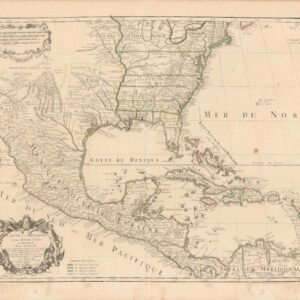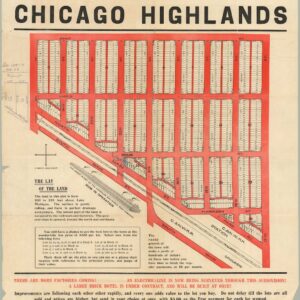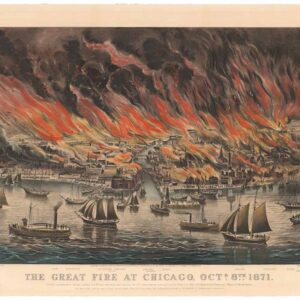The most important and influential map of Virginia and Carolina to appear in the 17th century, in excellent original color.
Virginiae Item et Floridae Americae Provinciarum, nova Descriptio.
Out of stock
Description
The most important map of the region for nearly seventy years, this Mercator/Hondius map stretches along the southeastern coastline of North America from the Spanish colony of St. Augustine to Chesapeake Bay. The Outer Banks of the Carolinas are prominently depicted, although too far east: a cartographic error that would define this section of coastlines on maps for over a decade.
First published in 1606, it was the only regional American map in the Hondius edition of the Mercator atlas, Gerardi Mercatoris Atlas sive Cosmographicae…, and it remained the most influential cartographic treatment of Virginia and Florida until the publication of A New Discription of Carolina By Order of the Lords Proprietors by John Ogilby and James Moxon in 1672.
Virginae Item et Floridae draws on two cartographic sources from the late 16th century: the 1591 Jacques Le Moyne map of Florida and the 1590 John White map of Virginia and Carolina, both of which were published by Theodore de Bry.
Mysterious Lakes and Rivers
The inland geography depicted on the map is a fascinating maze of rivers and mythical lakes. The source of many of the rivers is the gold and silver bearing “Apalatcy” mountain range. This makes our map, following Le Moyne, one of the earliest maps to depict and name the Appalachian Mountains. A notation suggests that ‘ Apalatcy,’ a term presumably derived from a once populous American Indian nation inhabiting the Pensacola region, are rich in gold and silver. Later 19th century discoveries in the Carolinas indeed lead to a minor gold rush.
Hondius’s most curious deviation from the Le Money-De Bry map involves the placement of the River de May and Lake Apalachy, here identified as a Lacus Aquae Dulcis (sweet water lake). Hondius has shifted the lake to the foot of the Apalatcy mountains, probably because he misidentified the River de May with the Savannah River. The result is that the River de May flows in a southeasterly direction instead of in the A-shaped course given by Le Moyne. This cartographic error would persist on maps well into the 18th century. Scholarly consensus has yet to be reached on an attribution of the River de May, with some identifying it as St. John’s River and others as St. Mary’s River; in the latter, the large lake would represent Okefenokee Swamp.
Another fascinating feature on the map is a lake nestled in the Apalacty mountains that is fed by an enormous waterfall, possibly influenced by native Indians descriptions of Niagara Falls.
Finally, a third lake, labeled “Sarrope,” is possibly an early depiction of Lake Okeechobee.
The map is embellished with illustrations reflecting early encounters with American Indians. These include a Floridian king and queen, sea monsters, and an American Indian fishing canoe taken from De Bry. Within the framework of the title cartouche, on either side of the title itself, are a pair of views of Indian villages, drawing a distinction between the materials and layout of a Florida village and those of a Virginia village.
The cartouche is an excellent strap work design, here highlighted with fabulous original blue hand water color.



Cartographer(s):
Jodocus Hondius (14 October 1563 – 12 February 1612) was a Flemish engraver and cartographer. He is sometimes called Jodocus Hondius the Elder to distinguish him from his son Jodocus Hondius II.
Hondius is best known for his early maps of the New World and Europe, for re-establishing the reputation of the work of Gerard Mercator, and for his portraits of Francis Drake. One of the notable figures in the Golden Age of Dutch/Netherlandish cartography (c. 1570s–1670s), he helped establish Amsterdam as the center of cartography in Europe in the 17th century.
Condition Description
Significant scattered wear, especially along the centerfold, but map image excellent.
References
Cumming, W., The Southeast in Early Maps, no. 26 and plate no. 2. Boston Public Library, Leventhal Collection, G3870 1633 .H66. Burden, P., The Mapping of North America, #151. Koeman, C., Atlantes Neerlandici. Bibliography of Terrestrial, Maritime and Celestial Atlases and Pilot Books, Published in the Netherlands up to 1880, vol. 2, p. 282 no. 141. Goss, J., The Mapping of North America: Three Centuries of Map-Making 1500-1860, no. 23. Lowery, W., The Lowery Collection, 100.



